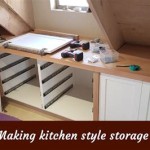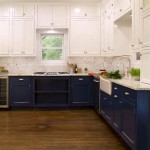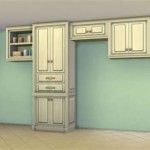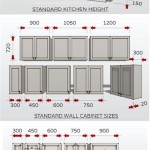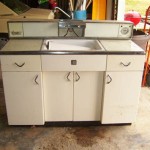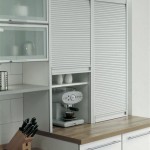How to Reface Your Own Kitchen Cabinets
Refacing kitchen cabinets is a cost-effective way to revitalize the look of your kitchen without the expense and disruption of a full replacement. This process involves replacing the cabinet doors, drawer fronts, and hardware, while retaining the existing cabinet boxes. With some DIY skills and planning, you can significantly transform your kitchen's aesthetic and increase its value.
1. Planning and Preparation
Before embarking on the refacing project, meticulous planning is key to ensuring a successful outcome. Begin by assessing the condition of your existing cabinets. Examine the cabinet boxes for any structural damage, such as warping or water damage. If the boxes are sound, you can proceed with refacing. Next, decide on the new style and materials for your cabinet fronts. Consider the overall design of your kitchen and choose finishes that complement the existing decor. You can opt for traditional wood doors, sleek modern laminate panels, or even custom-made doors to achieve a unique look.
Once you have chosen the new cabinet fronts, measure the existing doors and drawers precisely. You will need these measurements to order the replacement doors from a cabinet supplier or online retailer. Be sure to consider the hinges and hardware to ensure compatibility with your existing cabinets. Finally, gather the necessary tools and materials, including:
- Tape measure
- Level
- Screwdriver
- Drill
- Saw
- Sandpaper
- Primer
- Paint or stain
- Cabinet hardware
Prepare your work area by clearing the kitchen counters and removing any obstructions. Cover the floor to protect it from dust and debris. Disconnect the power supply to the kitchen appliances if necessary. Ensure proper ventilation and wear appropriate safety gear, such as gloves and eye protection, throughout the project.
2. Removing Existing Doors and Hardware
With your work area prepared, you can begin removing the existing cabinet doors and hardware. Start by detaching the cabinet doors from their hinges. Gently pry off the doors using a flathead screwdriver or a door removal tool. Be careful not to damage the cabinet box or the hinge screws. Once the doors are removed, take inventory of the hinges and hardware. You may need to purchase replacement hinges that match the new cabinet doors.
Next, remove the existing cabinet hardware, such as knobs, pulls, and handles. Use a screwdriver or wrench to loosen and detach the hardware. Note the placement and orientation of the hardware on the doors to ensure accurate reinstallation later. Once the hardware is removed, set it aside for safekeeping.
3. Installing New Cabinet Doors and Hardware
Now you are ready to install the new cabinet doors. Begin by attaching the hinges to the doors. Use a screwdriver to secure the hinges to the doors according to the manufacturer's instructions. Ensure that the hinges are aligned correctly and flush with the door surface. Next, attach the hinges to the cabinet boxes. Use a drill to create pilot holes for the hinge screws before driving them in.
Once the hinges are installed, carefully hang the new cabinet doors on the hinges. Check that the doors are level and aligned properly. If necessary, adjust the hinge screws to ensure smooth operation. Finally, install the new cabinet hardware. Use a drill to create pilot holes for the hardware screws before driving them in. Make sure the hardware is installed in the correct position and orientation.
4. Painting or Staining Cabinet Fronts
After installing the new doors and hardware, you can paint or stain the cabinet fronts to achieve the desired look. Begin by cleaning the cabinet fronts with a damp cloth to remove any dirt or debris. If you are painting, apply a layer of primer to create a smooth surface for the paint. Allow the primer to dry completely before applying the paint. Use multiple thin coats of paint rather than one thick coat to ensure even coverage and avoid drips.
If you are staining, apply a wood stain to the cabinet fronts according to the manufacturer's instructions. Allow the stain to dry completely before applying a sealant to protect the finish. When painting or staining, ensure adequate ventilation and wear a respirator mask to protect yourself from fumes. Once the paint or stain is dry, you can enjoy your newly transformed kitchen cabinets.

Diy Cabinet Refacing Budget Friendly Made Easy Wisewood

Diy Cabinet Refacing Budget Friendly Made Easy Wisewood

Cabinet Refacing Ideas Diy Projects Craft How To S For Home Decor With

Cabinet Refacing Ideas Diy Projects Craft How To S For Home Decor With

Kitchen Cabinet Refacing The Happy Housewife Home Management

Painted Furniture Ideas Diy Refacing Kitchen Cabinets

How To Resurface Kitchen Cabinets 2024 Guide Forbes Home

5 Best Diy Kitchen Cabinet Refacing Ideas To Try

How Do I Prepare My Kitchen For A Cabinet Refacing Project

The Case For Cabinet Refacing Infographic Bendheim
Related Posts


